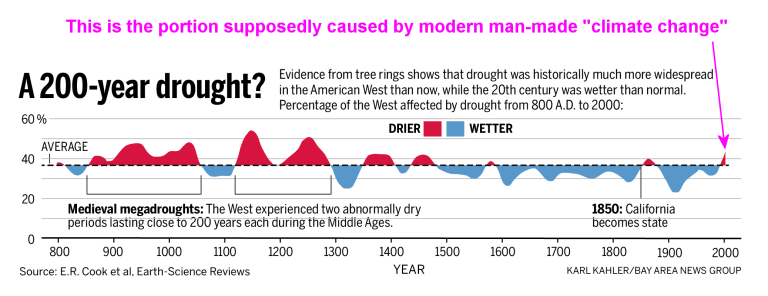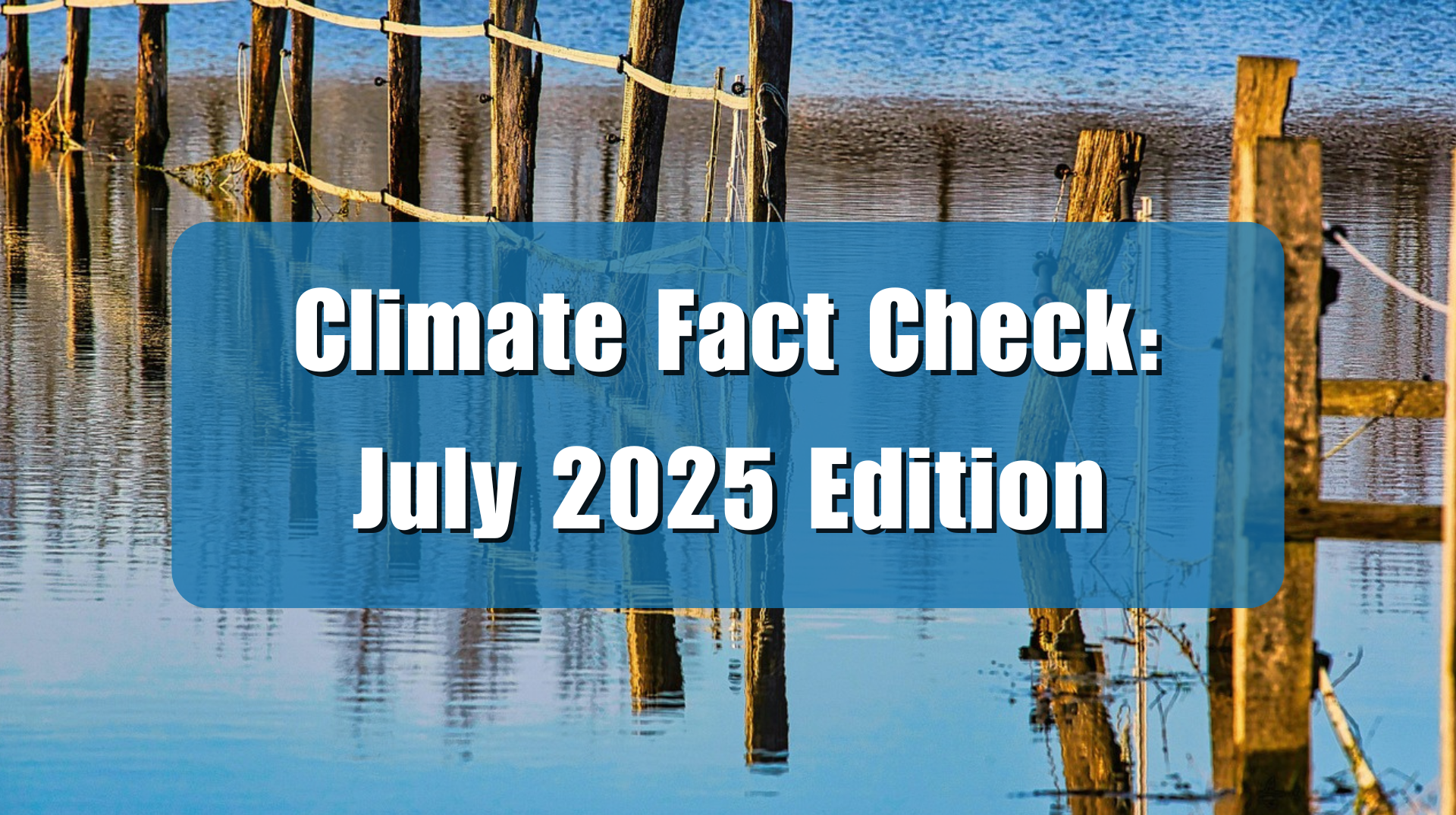Yahoo News is promoting the false claim that human climate change is responsible for a historic drought covering California and the Western United States.
Although drought conditions have persisted for a couple of years now across portions of the Western United States, droughts in the dry West are common and research shows much larger, longer-term droughts have occurred there historically. Because current conditions are not outside the historic records of drought, there is no evidence human greenhouse gas emissions are contributing the current drought.
In a story, titled, “California and much of the American West face mega-drought brought on by climate change,” Yahoo New claims “Thanks in part to rising temperatures due to climate change, “extreme” or “exceptional” drought conditions are now occurring in 74 percent of the state of California, while 72 percent of the Western U.S. is classified as experiencing “severe” drought, according to data from the U.S. Drought Monitor.”
“Back-to-back dry years in conjunction with above-average temperatures have exacerbated drought conditions across the American West, the National Oceanic and Atmospheric Administration said on its website,” continues Yahoo News. “The extent of the drought is unprecedented in recorded history, with 100 percent of both California and Nevada now classified as experiencing ‘moderate to exceptional drought.’”.
Data shows “back to back” dry years are not unusual in California or the Western United States, even in recorded history, and neither California nor the Western United States are experiencing historic drought.
Undermining Yahoo News’ alarmist story is the fact that when the U.S. Environmental Protection Agency (EPA) brought back its Climate Change Indicator series in mid-May, the agency’s post, titled “Climate Change Indicators: Drought,” reported no cause for alarm that climate change is increasing drought. The data cited and graphed by EPA shown in Figure 1 indicates no trend towards greater numbers of droughts or droughts of greater severity.
“Average drought conditions across the nation have varied over time,” writes EPA. “The 1930s and 1950s saw the most widespread droughts, while the last 50 years have generally been wetter than average [see the figure below]. Over the entire period … the overall trend has been toward wetter conditions,” wrote EPA.

EPA’s drought climate change indicator confirms what other sources of data have shown. As reported in Climate at a Glance: Drought, for example, the United Nations Intergovernmental Panel on Climate Change (IPCC) reports with “high confidence” that precipitation has increased over mid-latitude land areas of the Northern Hemisphere (including the United States) during the past 70 years. IPCC also has “low confidence” about any negative precipitation trends occurring globally.
Moreover, the U.S. National Oceanic and Atmospheric Administration reports America is currently is undergoing its longest period in recorded history with less than 40 percent of the country experiencing “very dry” conditions. Also, the United States in 2017 – and then again in 2019 – registered its smallest percentage of land area experiencing drought. 2019, for example, ranked among California’s wettest years since official records have been kept.
Interestingly, the graphic accompanying Yahoo News’ story fails to include the drought map of Colorado. Perhaps this is unsurprising since, had Yahoo News included data from Colorado in its story, it would have undermined the claim that the drought in the Western U.S. was historic. Although nearly 2/3 of Colorado was experiencing severe drought or worse in June of 2020, currently more than half the state is experiencing no drought at all, and just 35 percent of the state is experiencing severe drought or worse.
Going back further in time, research conclusively demonstrates the current drought in the Western United States is not historic in length or severity. It is well-recognized that drought is cyclical, and mega-droughts, some lasting 100 years or more, have been commonplace in the past, as seen in Figure 2.

In the book “The West Without Water,” the authors wrote,
“Prolonged droughts — some of which lasted more than a century — brought thriving civilizations, such as the ancestral Pueblo (Native Americans) of the Four Corners region, to starvation, migration and finally collapse.”
Indeed, research shows decade-long droughts happen once or twice a century in the Western United States, and droughts last for multiple decades, occur a few times each millennium. In a 2016 Columbia University Academic Commons paper, the authors’ state,
“During the Medieval Climate Anomaly (MCA), Western North America experienced episodes of intense aridity that persisted for multiple decades or longer. These mega-droughts are well documented in many proxy records, but the causal mechanisms are poorly understood.”
To conclude, contrary to Yahoo News’ report, “back-to-back,” years of drought are hardly uncommon. Also, since mega-droughts of the past in the Western United States have lasted for decades and even centuries or more, it is impossible to attribute current drought conditions, only two years old, to human caused global warming.

























Warmer is wetter, colder is dryer. Warmer leads to more evaporation and more precipitation moving to land.
Isn’t Yahoo and News an oxymoron???